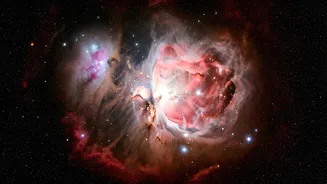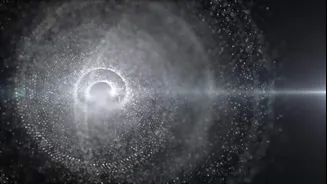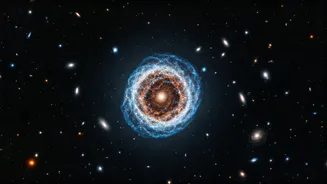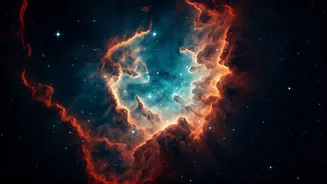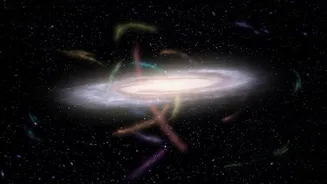Unseen Universe Revealed
The exploration of dark matter presents a captivating scientific challenge, aiming to unveil the composition of our universe, which is mainly comprised
of substances we cannot see directly. Dark matter, a force that doesn't interact with light, is hypothesized to be a critical component of the cosmos, influencing the rotation of galaxies and their formation. The quest to understand this invisible entity has spurred numerous research endeavors worldwide. Scientists have developed ingenious methods, utilizing diverse scientific instruments such as telescopes and particle detectors, to identify possible interactions of dark matter with ordinary matter. Their investigations have led to an intriguing observation: an unusual glow at the center of the Milky Way, which may potentially be attributed to the annihilation of dark matter particles.
Mysterious Galactic Glow
Recent discoveries point to the fascinating possibility of an unusual light emanating from the center of our galaxy, the Milky Way. This intriguing phenomenon is believed to be associated with dark matter particles colliding and annihilating each other. This annihilation can generate gamma rays or other particles, offering scientists a unique chance to study this invisible substance. Scientists are currently using astronomical observations, combined with data from particle physics experiments, to refine their models and understand the nature of dark matter. The discovery of this glow, if confirmed, would provide crucial evidence that supports the theory of dark matter, revolutionizing our comprehension of the universe's structure and behavior.
The Ongoing Scientific Debate
The scientific community continues to debate the specific characteristics and composition of dark matter. Although the existence of dark matter is strongly supported by various observations, including galactic rotation curves and gravitational lensing, its precise identity remains a mystery. Several candidates, such as weakly interacting massive particles (WIMPs), axions, and sterile neutrinos, are under intensive investigation. The detection of a potential signal from dark matter in the Milky Way's center has ignited intense discussions among scientists and researchers. They now are carefully examining the data to rule out alternative explanations, such as emissions from pulsars or other astrophysical phenomena. This rigorous scientific process, involving extensive analysis and peer review, ensures that the understanding of dark matter continues to progress.
Future Cosmic Discovery
As technology advances, scientists are constantly developing more sophisticated methods and instruments to search for dark matter. The next generation of telescopes and particle detectors, with improved sensitivity and precision, promise more opportunities to observe potential dark matter signatures. Furthermore, international collaborations are building large-scale experiments to maximize the chances of uncovering conclusive evidence. These endeavors show the collective commitment of the scientific community to understanding the universe. These projects will enable researchers to gather more data, allowing for deeper exploration of dark matter. These ongoing projects are poised to offer new revelations, potentially reshaping our view of the universe and its fundamental components, eventually moving us closer to understanding the true nature of dark matter.




